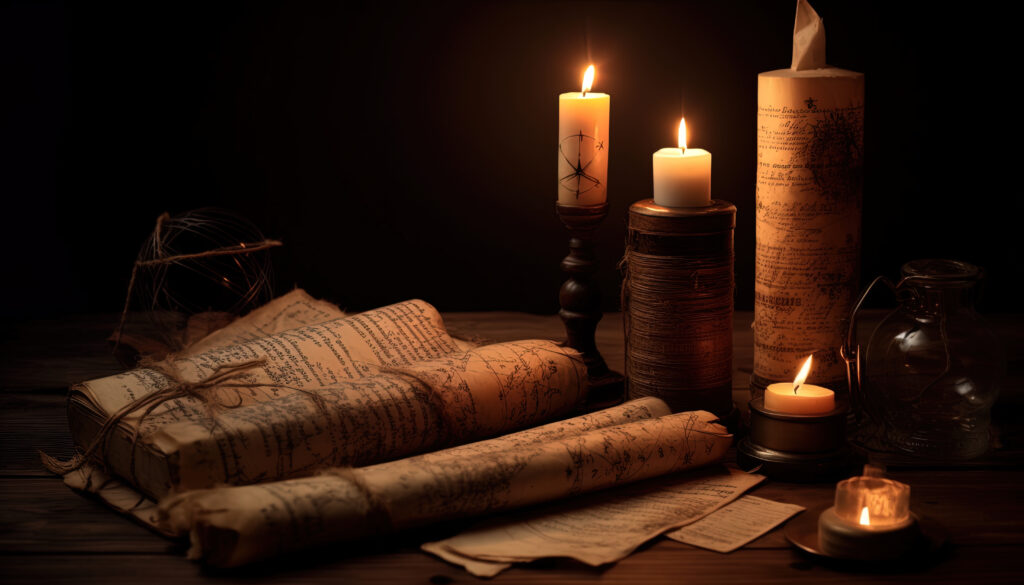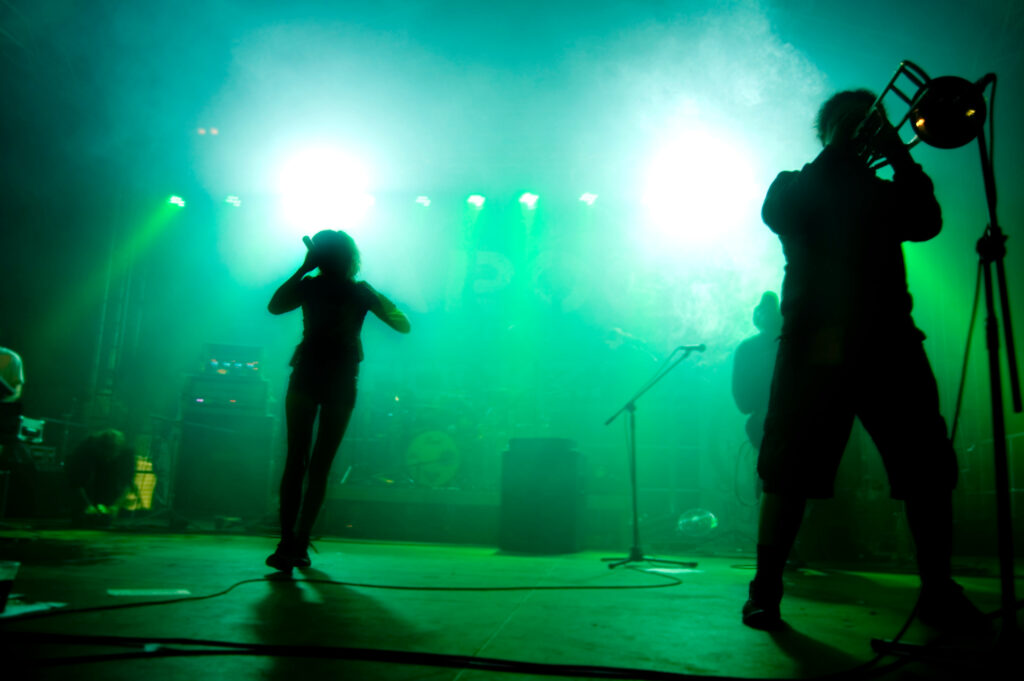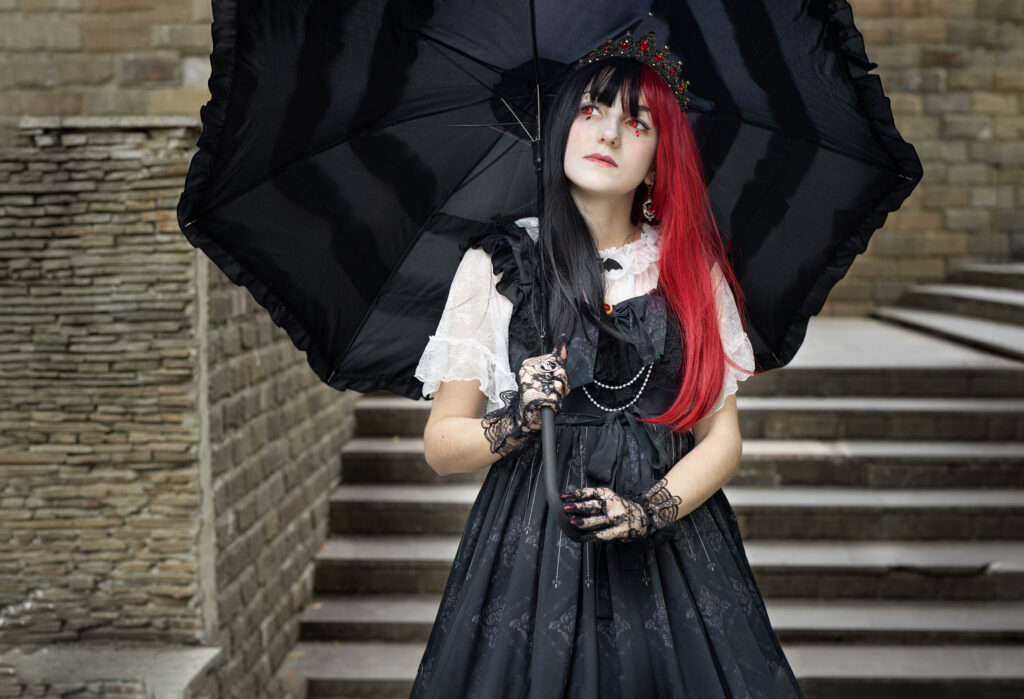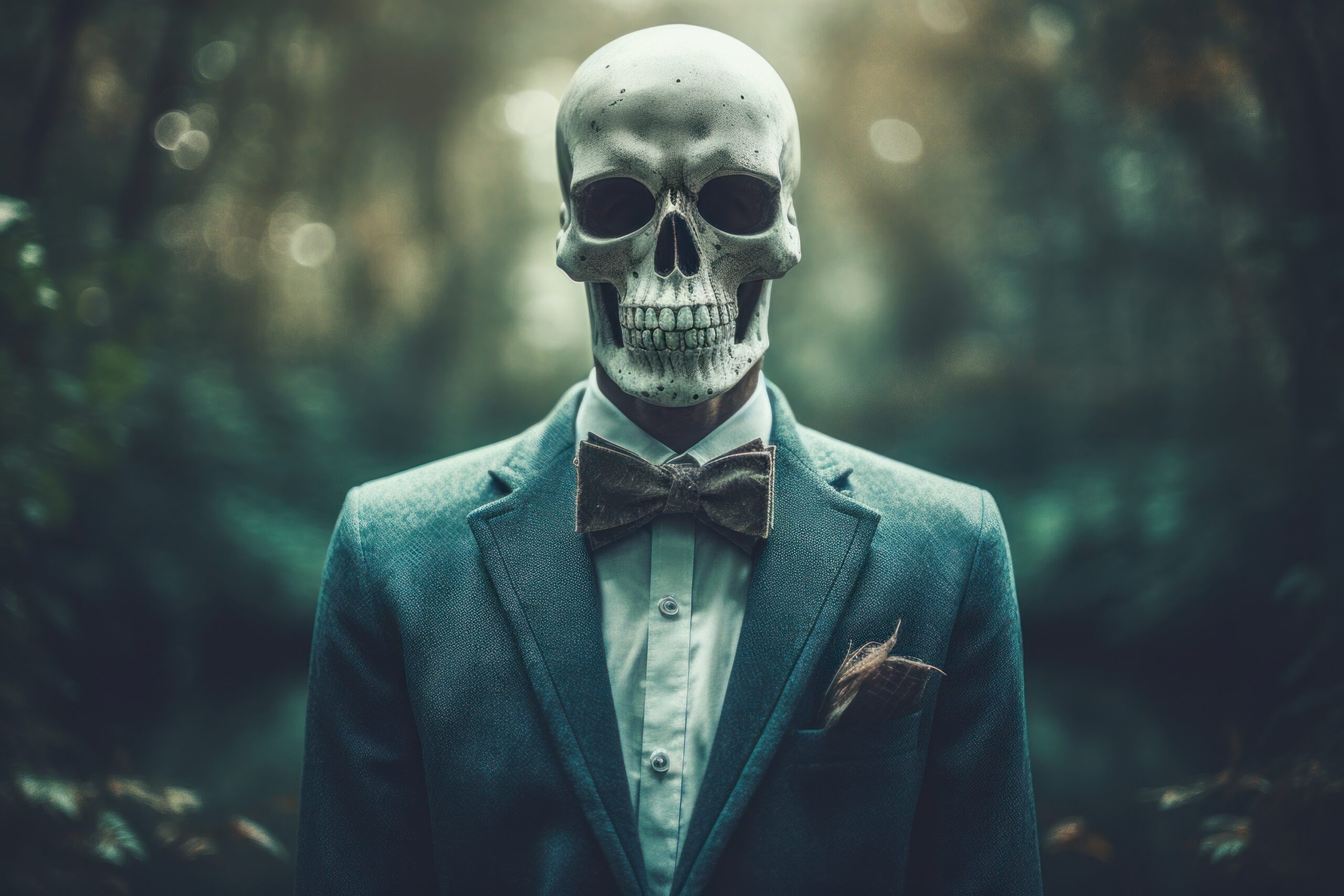What is a “goth”? What is “the gothic”? Ask five different people these questions and you’ll probably get a myriad of answers. Even people who belong to this particular subculture, do not have a singular definition that fits all. Some common responses would be, someone who:
- Dresses in a lot of black,
- Has a penchant for the morbid and macabre,
- Embraces depression as a lifestyle,
- Only listens to music from a distinct group of artists
- Loves horror,
- Is obsessed with skulls, cobwebs, candles, bats and Halloween,
- Heavily uses makeup, especially black eyeliner,
- A fondness for graveyards,
- Has a wild and funky hairstyle.
Now, does this describe me? Well okay, yes – although I’ve given up on the makeup and I don’t have enough hair left to style it. However, do any of these on their own define someone as a goth? Probably not. There are many folks out there who will insist that you cannot be a ‘real’ goth if you don’t meet some specific criteria, with which these gatekeepers invariably appoint themselves the sole arbiter. Although, there must be some definition, right? Otherwise, how would anyone know if they are a goth?
In this piece I want to explore briefly where the terms goth and gothic originate, some of the different things they can mean to people, and lastly what they mean to me.
A note on terminology
At this point, it seems pertinent to clarify how I am grouping different terminology. When talking about relatively contemporary people (i.e. not the Visigoths or Ostrogoths) I use the term ‘goth’ as a noun to refer to an individual within the entire gothic subculture and the word gothic, is used primarily as an adjective. I know that this will upset some people – looking at you 80s music goth people! However, although I recognise that many folk cling to the word goth as belonging solely to members of the post-punk movement, for the sake of simplicity and because I’ve always found saying the phrase “I’m gothic” to sound a bit odd, you’re all being lumped in together. As time moves on and the culture grows, in my humble opinion, the term has become multifaceted in modern parlance. I know, controversial stuff, but as we’ll see all of the gothic subculture is interconnected anyway and we are all merely subsets of the subculture.
The Original Goths
Ask a historian what a goth is, and they will most probably not describe an individual wearing heavy makeup, clad all in black, gloomily dancing away to Bauhaus at their local nightclub. The Goths were a group of barbarian tribes, where the term barbarian was used by the Roman Empire to refer to anybody outside of the Latin or Greek peoples. They were often described as rude, brutal, uncivilised, uncultured and eventually, as Christianity pervaded the Empire, anybody that was non-christian. In other words, they were treated as ‘the other’. The Goths comprised two of these Germanic tribes, the Geruthungi (shore people) and the Theruingi (forest people) – later named the Ostrogoths and Visigoths, respectively. They had a tumultuous relationship with the roman empire, regularly invading borders but also some being incorporated into the imperial army. As the Roman Empire split, these tribes were instrumental in the power struggles between East and West, with the Ostrogoths eventually leading to the downfall of the Western Roman Empire after capturing Rome. By this point due to Roman influence, Christianity had spread throughout the Goths and by creating a Gothic alphabet, the Goths had become the first barbarian tribe to form a literate culture.

This marks the end of the classical period, moving into the medieval or dark ages where, in no small part to the chronicling of the founding myths of the Goths by Jordanes’ Getica, the Goths were perceived as a missionary group – a narrative that was weaved into history by the rising Catholic Church. It was during this time that the prevailing artistic style changed to darker superstitious, religious and allegorical symbolism. This led to an architectural revolution, that we know today as “gothic architecture”; still seen in many cathedrals and churches across Europe with their Lancet windows, flying buttresses and vaulted ceilings – not to mention, numerous gargoyles and unrestrained decoration.
However, by the time of the Renaissance starting around the 14th century, there was a revival of appreciation of the classical artistic styles with the current gothic architectural style being viewed as substandard and boorish. The word “gothic” then became used as a disparaging description to distinguish between the classical and medieval periods, with the gothic style being described by the biographer Giorgio Vasari as “monstrous and barbaric”.
[This was a very scant and superficial skip through the history of the Goths – however, I would highly recommend delving further into this fascinating part of history! Some further reading recommendations can be found here]
Literature and Cinema

Jumping forward a bit in history to the 18th century and the age of Enlightenment, the ebb and flow of artistic thought once again wistfully looked back at the past with rose-tinted spectacles and, in fighting back against the relentless push of reason and rationality of the Enlightenment brought, romantic writers conceived that the previous gothic superstitious and supernatural artistic elements could lend itself to a dark, death-obsessed and macabre genre of romanticism, wherein the word “gothic” was pulled out of the mud and given a new shine to describe this new literary movement. The Castle of Otranto by Horace Walpole, published in 1764, is credited as the first gothic fiction novel, and Walpole was the first to describe it as such in a later edition – although it should be noted that the elements he used were already out there in different forms, including the works of Shakespeare. However, he stitched together many of the quintessential elements and moods of gothic fiction that have influenced generations of future authors who continued to develop the genre. This includes things such as the creaking doors in a haunted castle opening on their own, secret passageways and trapdoors as well as ghostly apparitions!
This genre led the way for many other poets and authors such as Bram Stoker, Ann Radcliffe, Percy Shelley, Emily Bronte, Edgar Allan Poe, H.P Lovecraft, Lord Byron and my personal favourite, Mary Shelley (I have read Frankenstein so much, that I have multiples copies because they keep wearing out!).
The Silver Screen
Beginning in the early 20th century, gothic cinema draws inspiration from the gothic literary tradition and encompasses a range of themes, settings, and visual aesthetics. One of the earliest examples of gothic cinema is the German Expressionist film movement of the 1920s, with films like “The Cabinet of Dr. Caligari” and “Nosferatu” which captured a sense of dread, distorted visuals, and psychological unease. These films set the foundation for gothic storytelling in cinema, exploring themes of horror, the supernatural, and the darker aspects of the human psyche.
The gothic genre continued to evolve throughout the 20th century, with notable contributions from Hollywood. In the 1930s and 1940s, Universal Studios produced iconic gothic horror films such as “Dracula,” “Frankenstein,” and “The Wolf Man,” starring actors like Bela Lugosi and Boris Karloff. These films further established the archetypal characters and visual motifs associated with gothic literature, bringing to life the elements brought together by Walpole, including eerie castles, foggy landscapes, and atmospheric lighting. The gothic tradition remained a prominent influence in horror cinema, with filmmakers like Alfred Hitchcock incorporating gothic elements into their suspenseful and psychological thrillers.
Musical Goths

What music do goths listen to? Well, the real answer to that is everything and anything – or nothing. However, one genre is inextricably linked to the gothic subculture. In the late 1970s, the music goth subculture emerged as a countercultural movement within the broader British punk scene. Characterised by its more dark and melancholic aesthetic it drew inspiration from gothic literature, horror films, and post-punk music. Bands like Bauhaus, Siouxsie and the Banshees, and The Cure played a significant role in shaping the musical sound and image of the subculture. The music itself featured atmospheric and introspective elements, often incorporating elements of gloom, romanticism, and macabre themes. One of the defining songs of the period was the over nine-minute-long Bela Lugosi’s Dead by Bauhaus.
Throughout the 1980s and 1990s, this element of goth culture expanded and diversified, gaining a dedicated following worldwide. The subculture extended beyond the music, encompassing fashion, art, and a distinctive lifestyle expressing a sense of individuality and nonconformity. Gothic clubs and festivals became gathering spaces for the community, providing a platform for both established and emerging bands. While the popularity of goth music waned in the mainstream over time, the community has continued to endure, with a very loyal fanbase continuing to celebrate its unique blend of darkness and beauty in music, fashion, and artistic expression.
Fashion and Aesthetic

Goths all dress in black, don’t they? Okay, I’ll readily admit that black is a common motif in Gothic fashion. But it is by no means restricted to that. Even a cursory glance at the Whitby Goth Weekend festival will reveal a cavalcade of different styles and colour themes. From the velvety dark red, purple and green in Victorian and Romantic Goth to the bright neon and muted pastels in Cyber and Pastel Goth, colour can be found everywhere. The “traditional goth” fashion comes out of the British punk scene as it edged towards the new romantic movement. However, as people started to create their individual gothic aesthetic, they borrowed and amalgamated from a wide array of literary, historic and cinematic influences and themes, including stereotypical versions of Medieval, Georgian, Edwardian and Victorian clothing, motifs that wouldn’t be out of place in a work of fiction by E.A. Poe, or a scene from Dickensian London and, elements from gothic fiction such as vampires, the monstrous and macabre.
There are far too many gothic styles to go through each one: Traditional Goth, Victorian Goth, Romantic Goth, Fetish Goth, Cyber Goth, New Wave Goth, Medieval Goth, Corp Goth, Gothabilly, Hippy Goth, Faerie Goth, Vampire Goth, Tribal Goth, Pastel Goth, Steam Goth…the list continues to grow.
Personally, I belong to the Georgian/Victorian style of Goth, following the influences of some of my favourite literature and fictional characters: Frankenstein, The Strange Case of Dr Jekyll and Mr Hyde and Sweeney Todd. To some people, the aesthetic is the be-all and end-all where the more pomp and splendour, the better! Whereas, for others, it’s a much more toned-down affair, consisting of a T-shirt and (possibly black) jeans. A question that I (and I’m sure many of my fellow goths) get asked a lot when dressed in our finery is “Do you dress like that all the time?” For me, no. In fact over the last few years, I’ll be honest and say that I have favoured comfort over aesthetic. This may be a side effect of living through a pandemic and becoming a parent, although it is probably also a sad indictment of the relentless march of time towards my next milestone birthday!
Society’s Perception
It will be of no surprise to anyone who has lived on this planet for a while, that society doesn’t always do too well at tolerating differences. For people who dress, act and think outside the widely accepted societal norms that we have imposed on us, there can be widespread prejudice, unfair and harsh criticism and sometimes just sheer unadulterated hatred; sometimes coming with fatal consequences.
Bullying is commonplace against people who dare to be different – and this isn’t restricted wholly to the schoolyard. In my youth and adult life, I have been subjected to the usual jibes of “freak”, “mosher” and “weirdo”. I have been spat at, chased and threatened for nothing more than the clothes I’m wearing. While working in a bar, a fine upstanding gentleman threatened to rip my labret piercing out of my face because he felt it was just a bit too weird! However, I’m acutely aware that in the grand scheme of things, I’ve not experienced the worst that is on offer.
Because of the links with gothic literature and cinematic references, as well as a tendency to explore some of the more theatrical aspects of witchcraft, magic and mediumship (think Hammer Horror, Ouiji boards and pentagrams) goths have also had the label of “satanic” placed on them which, depending on the sensibilities of the person you’re speaking to, can come with a lot of pre-judgement and unwanted baggage that can create real problems for people with religious family and friends. In reality, as you may expect, although the aesthetics can sometimes borrow from an array of religious symbols (the crucifix probably being number one), goths in actuality follow a wide range of beliefs and non-belief.
Unfortunately, the consequences of this intolerance can lead to tragedy. On the 24th of June 2001, Nicola Ann Raphael died at the age of 15. Her suicide was the result of years of bullying due to her expression of ‘goth’ music and clothing. It is infuriating to also learn that on the anniversary of her death, the hatred was still so strong that her grave was looted and vandalised.
On the 11th of August 2007, Sophie Lancaster and Robert Maltby were attacked by a group of teenagers at Stubbylee Park in Bacup, Rossendale, Lancashire. It was a sustained and brutal attack, leaving both victims with significant head injuries. While thankfully Robert survived and eventually recovered from his injuries, Sophie died on the 24th of August at the age of 20, after having her life support terminated when it was concluded she would never regain consciousness. Sophies mother, Sylvia Lancaster founded the Sophie Lancaster Foundation as a campaign to Stamp Out Prejudice, Hate and Intolerance Everywhere (S.O.P.H.I.E) through lobbying and educational activities.
The Reality

I can only really speak from my own experience, but I have always found people in the goth subculture (as well as across all of the alternative subcultures) to be generally warm, friendly and welcoming. There’s always a spark of joy when you find someone that enjoys the same weird stuff that you enjoy. It has become a common trope that people exclaim surprise that when they come into contact with your typical goth out in public, usually waiting for a bus, they are actually really nice and personable people. Who would have guessed, huh?
Problems, problems, there are always problems.
However, having said that as with any group of human beings, there are always going to be issues – and the gothic subculture is no different. As mentioned earlier, there are lots of people who feel the need to narrowly define who can and cannot be a part of what they see as their little fiefdom. Across forums, message boards and other online groups there is significant gatekeeping and attempts to control the ‘purity’ of the group membership. As well as setting out the arbitrary criteria discussed at the beginning, there are also problems in the culture regarding racism and inclusivity. Although it shouldn’t need to be said, obviously this is completely unacceptable, but it would be remiss to not call it out as still a pervasive problem in the culture (not to mention the world). The slight bit of optimism I have left in me hopes that with time, this too will pass.
So, what do I think?
I, myself, am strange and unusual.
‘Beetlejuice’ – Lydia Deetz
Well after all that, how do I define what a goth is? What qualities qualify somebody? For me personally, it comes down to two elements that are shared across all facets of the subculture.
1. The Other
Throughout the history of the “gothic”, it has been tied to being different. The Goths were barbarians, gothic architecture was barbaric, the Romantics were rebelling against the rationality of the Enlightenment, the 80s music scene was countercultural, and today the expression of the gothic aesthetic in all its forms and its free-thinking mindset is seen as different. And, as we all know, being different isn’t always easy. But we accept and embrace difference – the goth subculture is a place for people shunned by society to feel that they belong, without having to compromise and regardless of what aspects of it they participate in.
2. Darkness and Beauty
I think that finding beauty in the darkness is a fundamental part of who I am. While a lot of people approach things like death, decay, the macabre and other gloomy facets of life and want to look away and ignore them, gothic people not only embrace them but have an appreciation and affinity to these often taboo aspects of life. Related to my previous point, I also find that goths have a love of, and are drawn to unloved and unwanted things. This always reminds me of the first line in the poem by Nicolette Sowder:
May we raise children
who love the unloved
things – the dandelion, the
worms and spiderlings.
But then again, that’s just me. You certainly don’t need to agree to this very loose definition, and I’m sure lots of people will not. In retrospect, I guess that my quintessential goths are the Addams Family! A group of outcasts and outsiders, vilified by the wider community, who didn’t live miserable lives, they were passionate and loved the creepy and weird which, to them, was the most normal thing in the world.
But what I would say is that whether you’re regularly dressing in all your fantastical gothic finery, hitting the club scene every week bugging the DJ for Joy Division, gently picking up a stranded spider and setting it down in a nice warm corner or feeling the urge to smile when you hear the rumble of thunder overhead – there is plenty of room for all of us under this particular black laced parasol.

Further Reading
- The Gothic: A Very Short Introduction by Nick Groom
- Gothic Charm School by Jillian Venters
- The Gothic Subculture by Chris Roberts, Hywel Livingston and Emma Baxter-Wright
- Worldwide Gothic: A Chronicle of a Tribe by Worldwide Gothic: A Chronicle of a Tribe
- Gothic: The Evolution of a Dark Subculture by Chris Roberts, Hywel Livingston and Emma Baxter-Wright
- The Goth Bible by Nancy Kilpatrick
- Goth Chic by Gavin Baddeley
- Gothic Literature by Sue Chaplin
- The Cambridge Companion to Gothic Fiction by Jerrold E. Hogle
